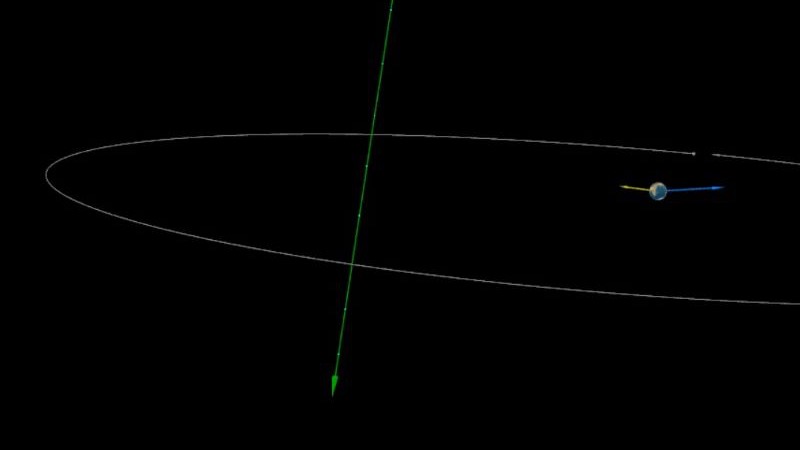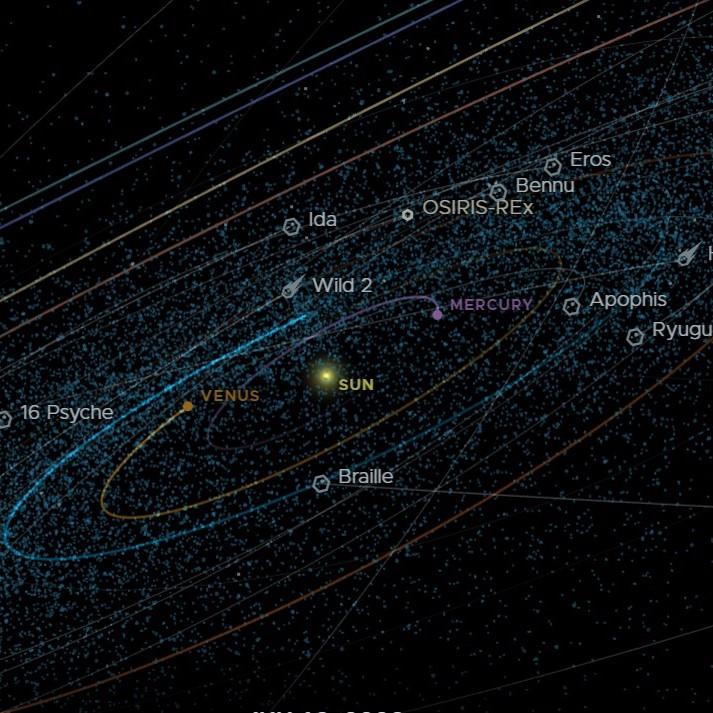
Asteroid 2023 LZ to pass Earth
At 18:36 UTC (1:36 p.m. CDT) on June 14, 2023, newly discovered asteroid 2023 LZ will pass Earth inside the moon’s orbit. The asteroid spans about 33 to 105 feet (10 to 32 meters). Or, as NASA said on its website, it’s house-sized. The Pan-STARRS 2 observatory in Hawaii just discovered asteroid 2023 LZ a few days ago, on June 10, 2023.
The space rock will pass about 197,000 miles (317,000 km) from Earth’s surface. In comparison, the moon is about 239,000 miles (384,000 km) from Earth.
Despite its relatively large size and nearness, there’s nothing to fear. Asteroid 2023 LZ will not hit Earth.
Tomorrow, newly-discovered asteroid 2023 LZ will pass 0.83 Lunar distances from Earth. It is 10-32 meters wide. pic.twitter.com/qDKNzclXjr
— Tony Dunn (@tony873004) June 13, 2023
Another recent close approach
This comes on the heels of another asteroid, 2023 LS, that snuck past Earth on June 9 at only a quarter of the distance to the moon. This asteroid, however, was quite a bit smaller, measuring about 6 to 20 feet (2 to 6 meters) across. 2023 LS’s discovery came after its closest approach. The reason scientists didn’t find it earlier was because they were blinded by the sun. The asteroid came from the direction of the bright sun, which is a weak spot in our defense against asteroids.
Fortunately, ESA has a planned mission, called NEOMIR, that would be able to detect asteroids such as this that come at us from the direction of the sun. And if you remember Chelyabinsk, that was another asteroid that approached Earth from the direction of the sun.
Newly-discovered #asteroid 2023 LS snuck up on us. Thought to be 2-6 meters wide, it passed almost as close to Earth as our geostationary satellites. It came from the direction of the Sun, so it was not discoverable until after its close approach on June 9. pic.twitter.com/xeGH0FhiLG
— Tony Dunn (@tony873004) June 12, 2023

Bottom line: Newly discovered asteroid 2023 LZ will buzz past Earth at 4/5 the distance to the moon on June 14, 2023. NASA said the asteroid is house-sized.
The post House-sized asteroid 2023 LZ to pass Earth first appeared on EarthSky.
from EarthSky https://ift.tt/FEN9wPd

Asteroid 2023 LZ to pass Earth
At 18:36 UTC (1:36 p.m. CDT) on June 14, 2023, newly discovered asteroid 2023 LZ will pass Earth inside the moon’s orbit. The asteroid spans about 33 to 105 feet (10 to 32 meters). Or, as NASA said on its website, it’s house-sized. The Pan-STARRS 2 observatory in Hawaii just discovered asteroid 2023 LZ a few days ago, on June 10, 2023.
The space rock will pass about 197,000 miles (317,000 km) from Earth’s surface. In comparison, the moon is about 239,000 miles (384,000 km) from Earth.
Despite its relatively large size and nearness, there’s nothing to fear. Asteroid 2023 LZ will not hit Earth.
Tomorrow, newly-discovered asteroid 2023 LZ will pass 0.83 Lunar distances from Earth. It is 10-32 meters wide. pic.twitter.com/qDKNzclXjr
— Tony Dunn (@tony873004) June 13, 2023
Another recent close approach
This comes on the heels of another asteroid, 2023 LS, that snuck past Earth on June 9 at only a quarter of the distance to the moon. This asteroid, however, was quite a bit smaller, measuring about 6 to 20 feet (2 to 6 meters) across. 2023 LS’s discovery came after its closest approach. The reason scientists didn’t find it earlier was because they were blinded by the sun. The asteroid came from the direction of the bright sun, which is a weak spot in our defense against asteroids.
Fortunately, ESA has a planned mission, called NEOMIR, that would be able to detect asteroids such as this that come at us from the direction of the sun. And if you remember Chelyabinsk, that was another asteroid that approached Earth from the direction of the sun.
Newly-discovered #asteroid 2023 LS snuck up on us. Thought to be 2-6 meters wide, it passed almost as close to Earth as our geostationary satellites. It came from the direction of the Sun, so it was not discoverable until after its close approach on June 9. pic.twitter.com/xeGH0FhiLG
— Tony Dunn (@tony873004) June 12, 2023

Bottom line: Newly discovered asteroid 2023 LZ will buzz past Earth at 4/5 the distance to the moon on June 14, 2023. NASA said the asteroid is house-sized.
The post House-sized asteroid 2023 LZ to pass Earth first appeared on EarthSky.
from EarthSky https://ift.tt/FEN9wPd

Aucun commentaire:
Enregistrer un commentaire